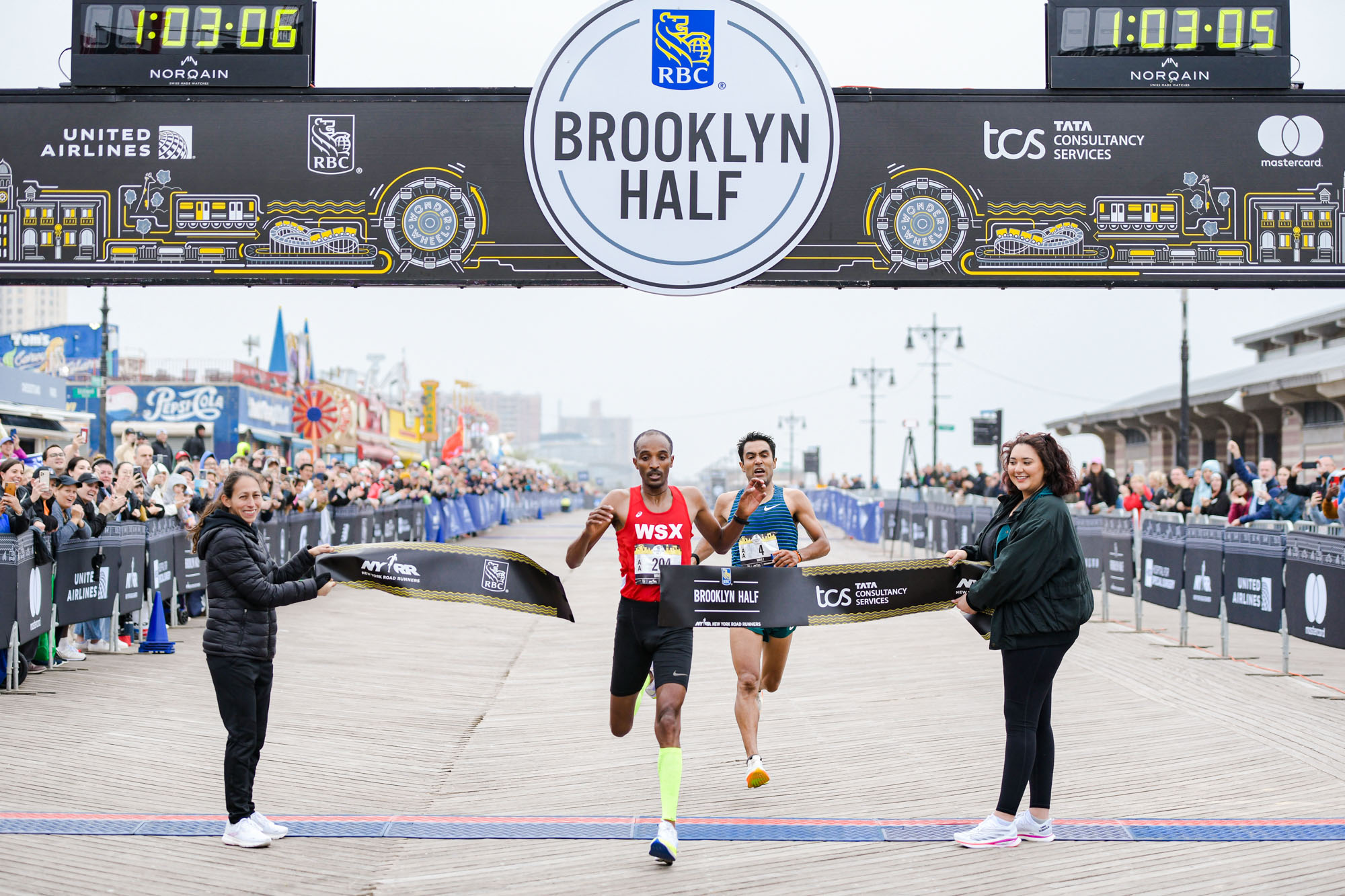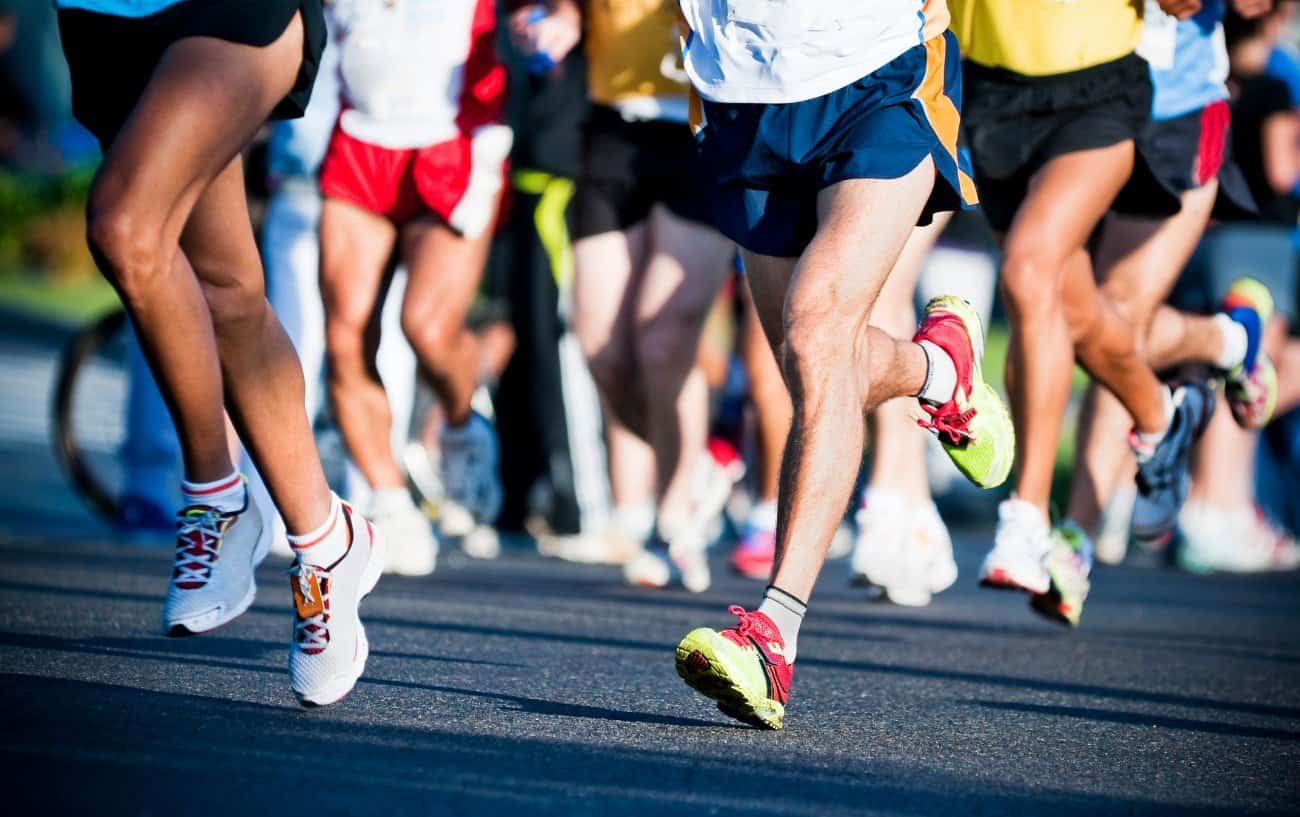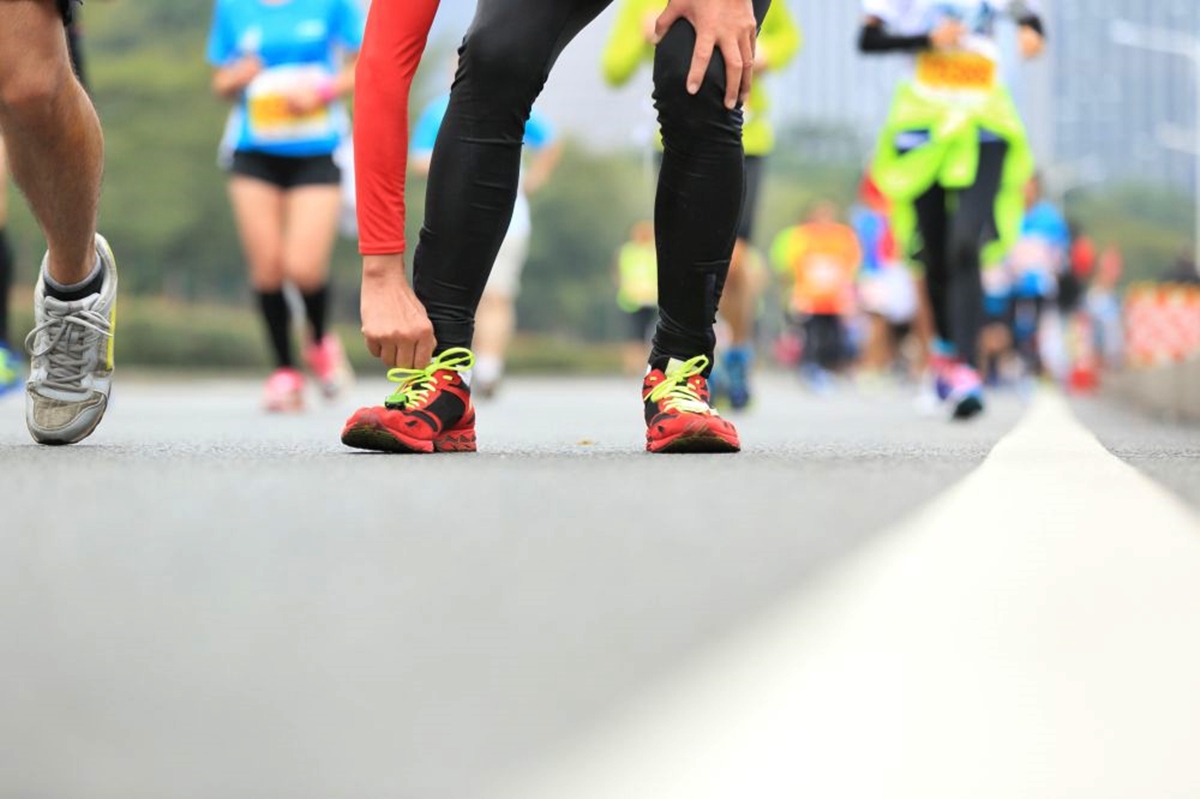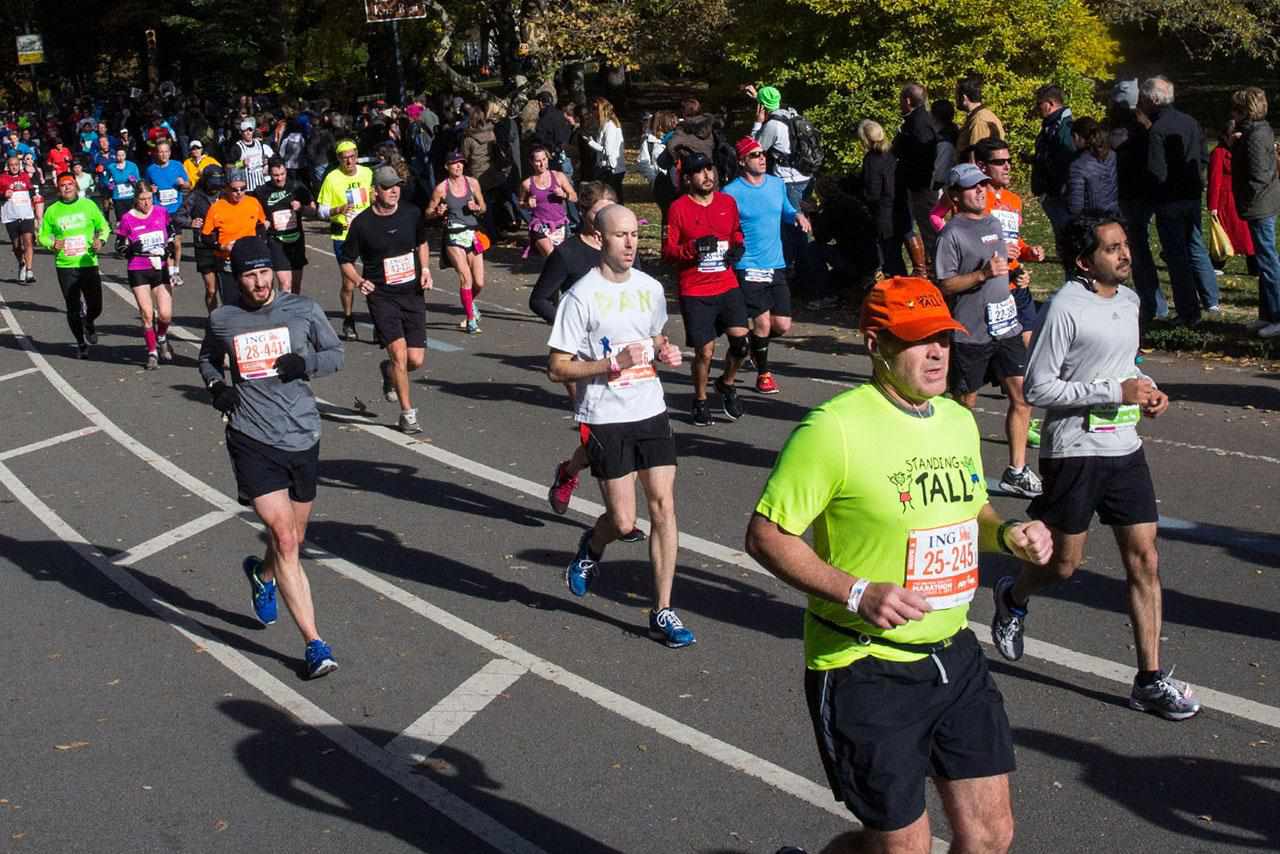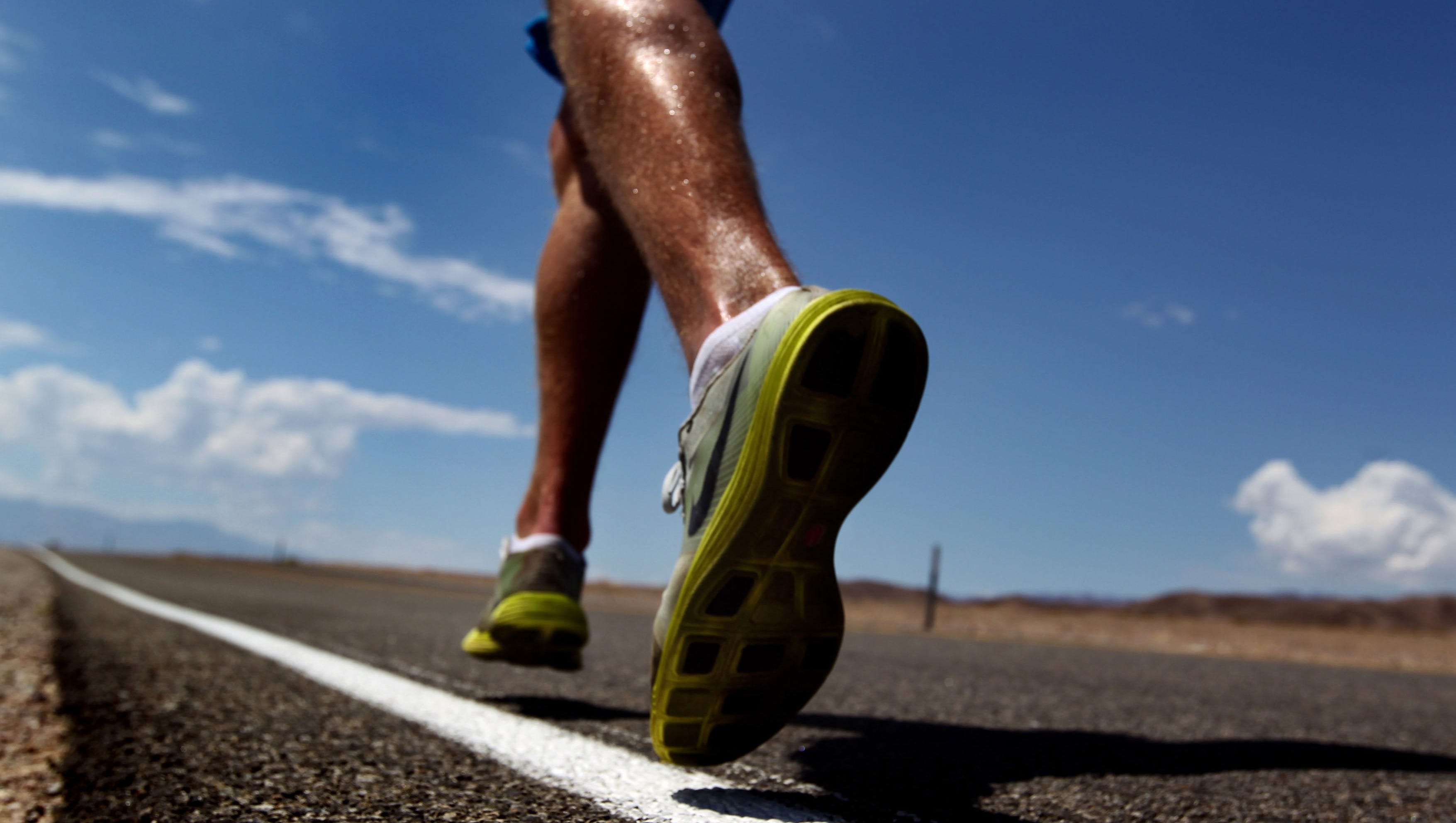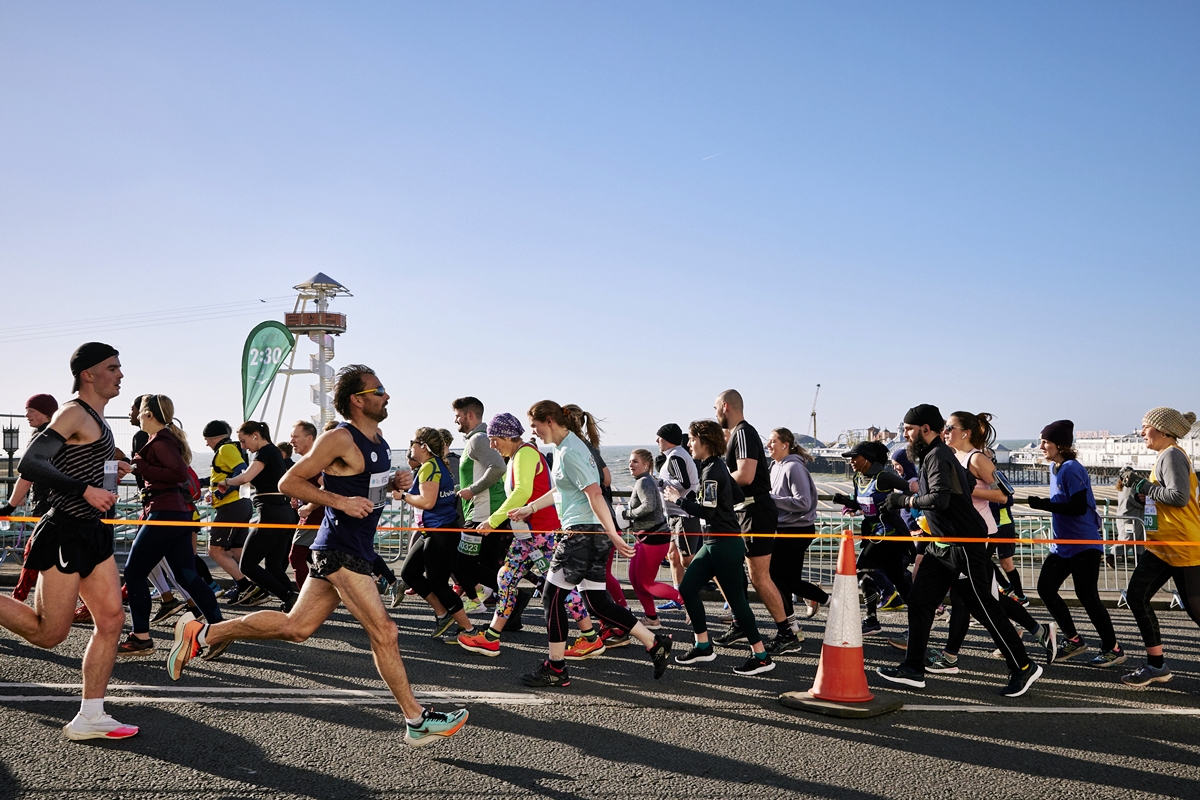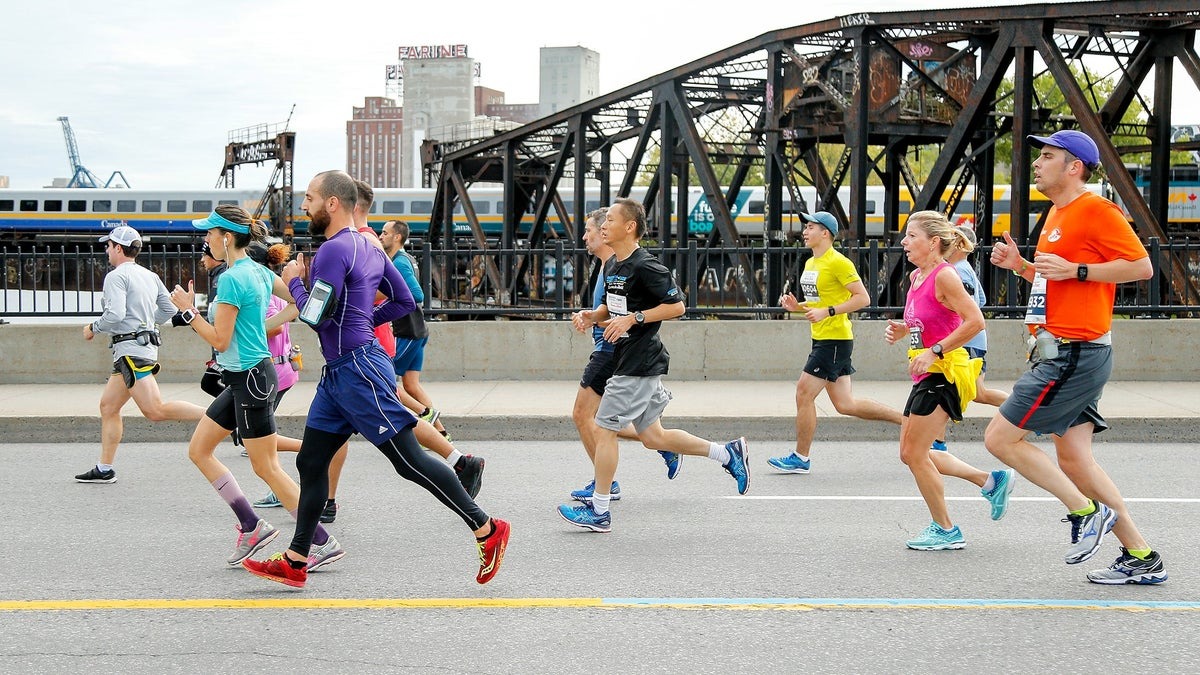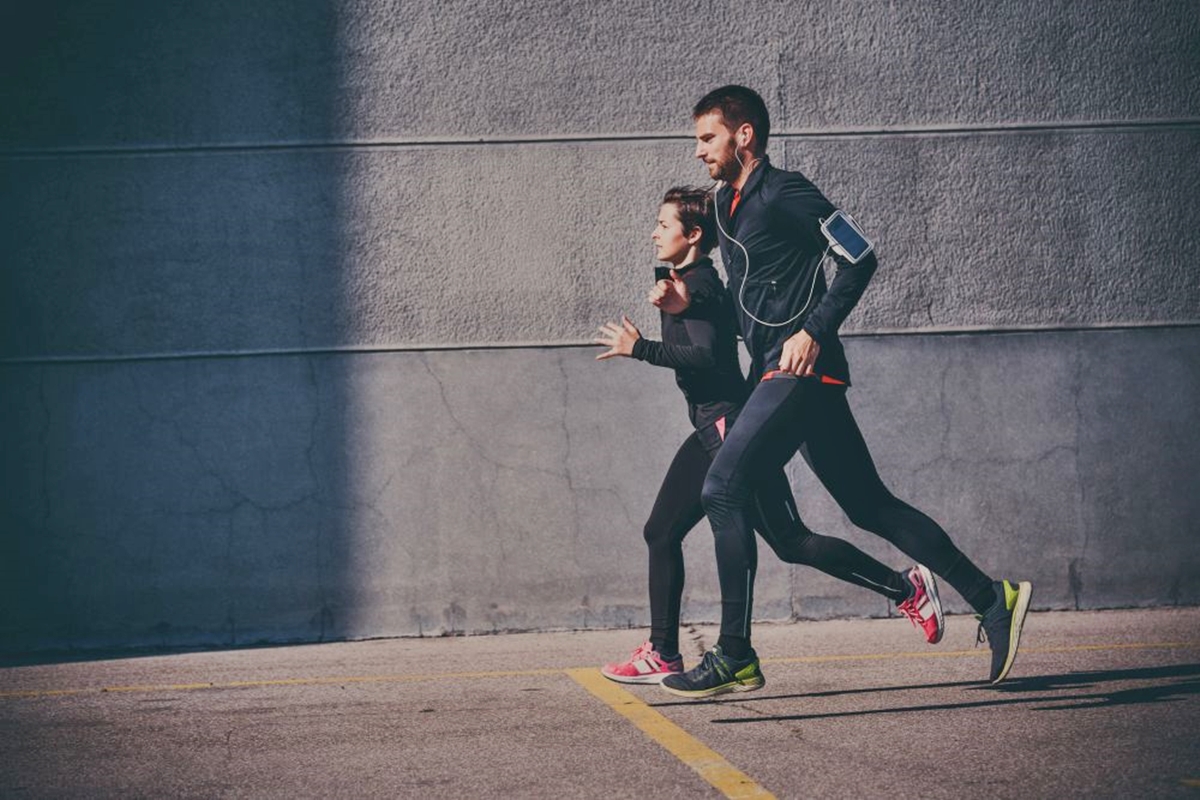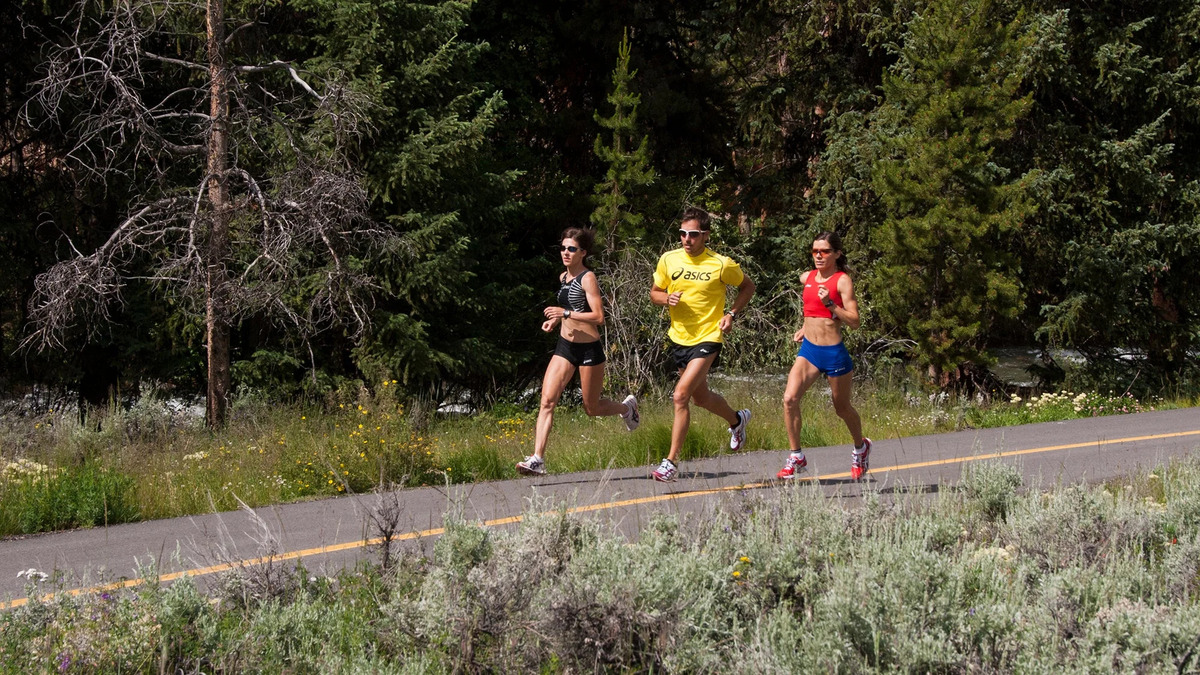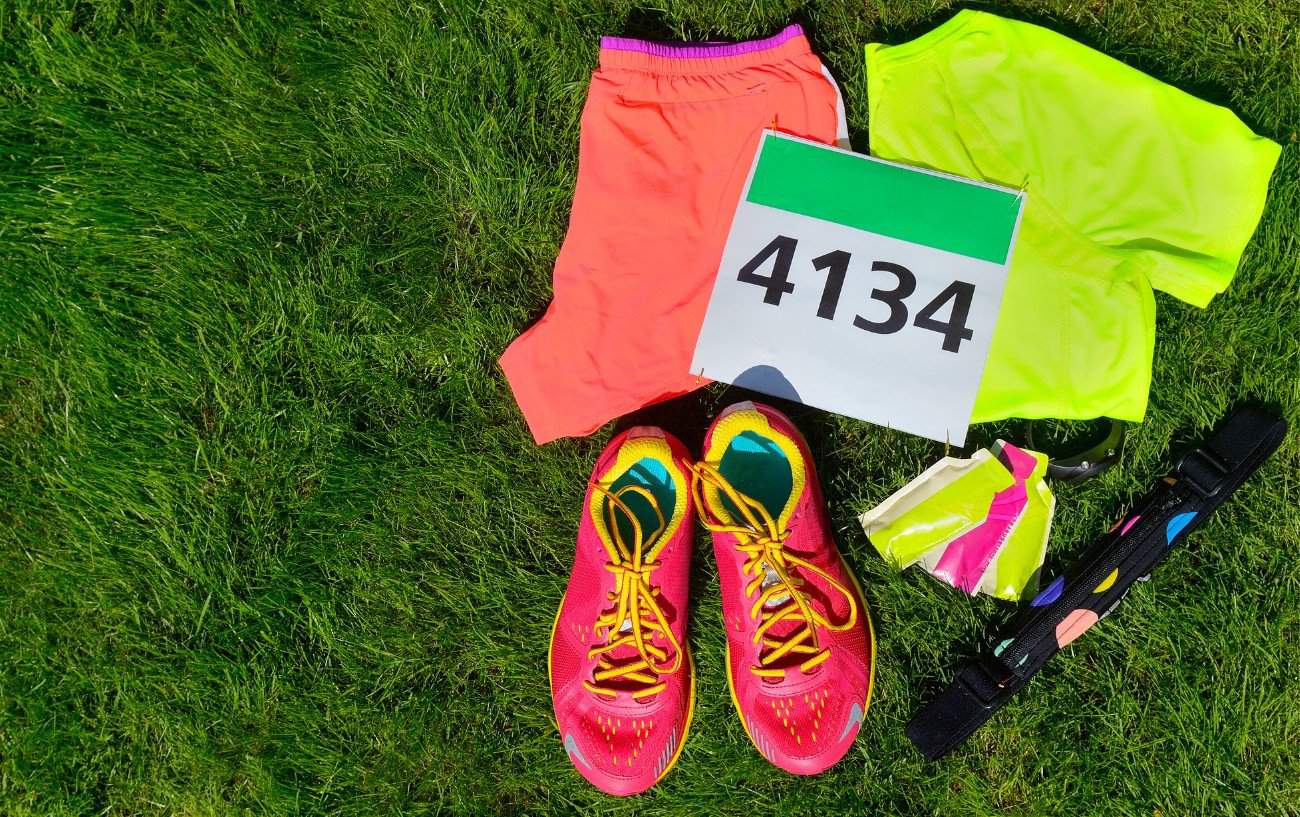Home>Misc>Featured>What To Do On The Day After A Half Marathon
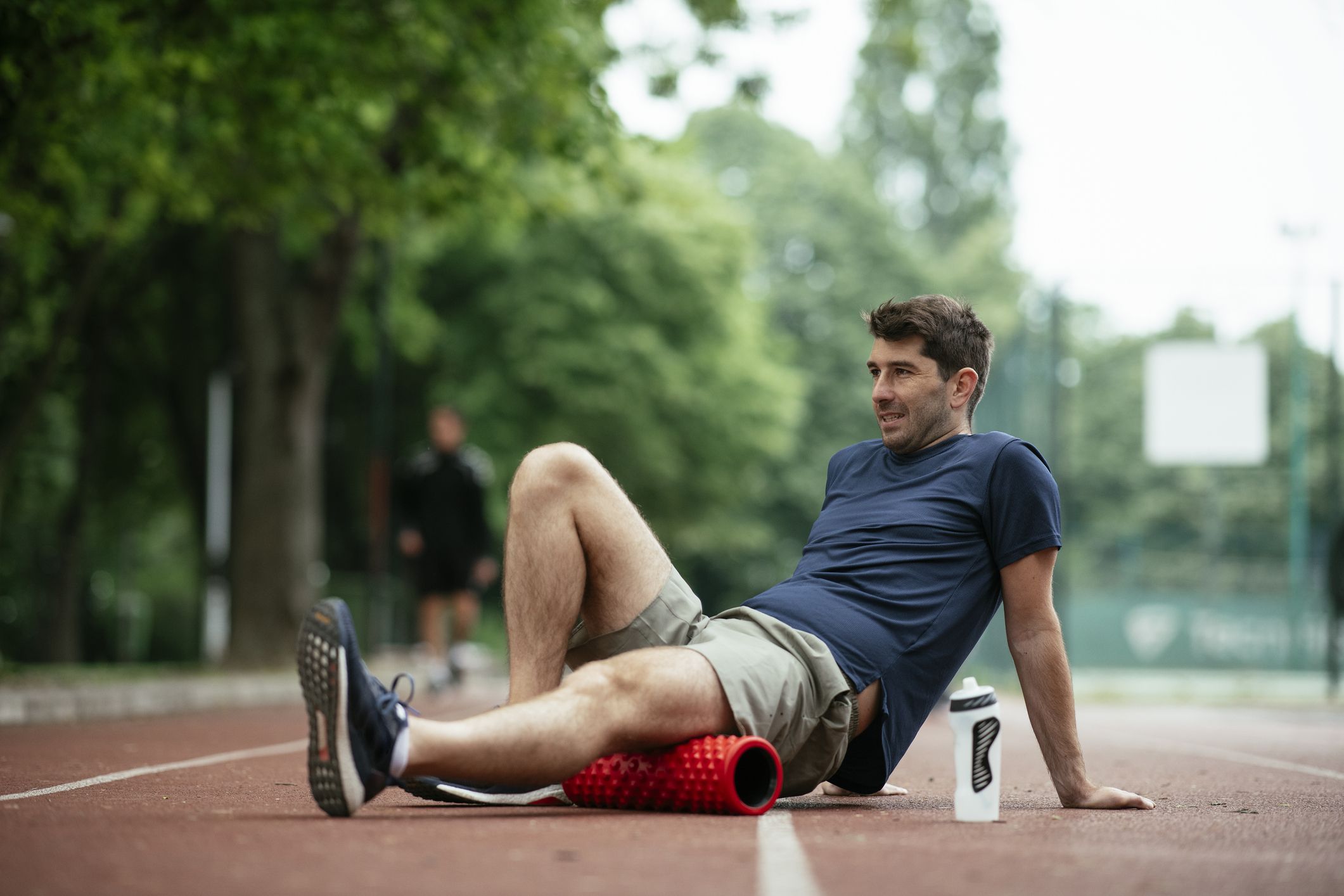

Featured
What To Do On The Day After A Half Marathon
Modified: January 2, 2024
Discover the best recovery tips and activities to do the day after your half marathon. Stay featured with our expert recommendations for a quick and effective post-race rejuvenation.
Introduction
Completing a half marathon is a significant accomplishment that requires months of training, dedication, and mental fortitude. Crossing the finish line is a thrilling moment, but it’s important to remember that the race isn’t truly over once you’ve taken off your running shoes. The day after a half marathon is a crucial time for rest, recovery, and reflection. By taking the right steps, you can optimize your recovery, reduce the risk of injuries, and set yourself up for future success.
After pushing your body to its limits during the race, it’s crucial to prioritize rest and recovery. Your muscles, joints, and connective tissues need time to repair and rebuild. The day after the half marathon should be focused on giving your body a chance to recuperate. This doesn’t mean you have to spend the whole day in bed, but rather to engage in activities that promote rest and healing.
In addition to rest, it’s important to hydrate and refuel your body. During a half marathon, you likely burned a significant amount of calories and lost a considerable amount of fluids through perspiration. Replenishing these essential nutrients and fluids is vital for your body to recover properly. Be sure to drink plenty of water and consume a balanced meal with carbohydrates, protein, and healthy fats.
Stretching and foam rolling are also important for relieving muscle tension, improving flexibility, and preventing post-race stiffness. Engaging in gentle stretching routines can help improve blood flow to the muscles, reduce soreness, and promote faster recovery. Foam rolling can specifically target tight areas and trigger points, providing myofascial release and aiding in muscular recovery.
While rest is important, incorporating gentle exercise and active recovery can actually help stimulate blood flow, reduce inflammation, and promote healing. This can include activities such as walking, swimming, or cycling at a low intensity. Just be sure to listen to your body and avoid any strenuous workouts that could further strain your muscles.
After a half marathon, it’s common to experience muscle soreness and inflammation. Applying ice packs to the affected areas can help reduce swelling, alleviate pain, and promote recovery. Additionally, elevating your legs can help improve blood circulation and reduce fluid buildup in the lower extremities. These simple techniques can make a significant difference in your recovery process.
Blisters and chafing are common issues that runners may face during a half marathon. Taking care of these minor injuries is essential to prevent further discomfort and potential infections. Cleanse the affected areas with mild soap and water, apply an antibiotic ointment, and cover them with a sterile bandage if needed. It’s important to keep the areas clean and dry to promote healing.
Consider treating yourself to a massage or physiotherapy session to aid in your recovery. These therapies can help alleviate muscle tension, improve circulation, and speed up healing. Massage therapy can also provide relaxation and reduce stress levels, contributing to a holistic recovery experience.
After completing a half marathon, it’s a good time to reflect on your performance. Celebrate your accomplishment and take pride in what you have achieved. Evaluate your race strategy, pacing, and overall experience. Identify areas for improvement and set new goals for future races. This reflection can help you learn from your experiences and continue to grow as a runner.
Lastly, take the time to plan for future races. Assess your training plan, nutrition, and recovery strategies. Determine what worked well and what could be improved. Set new goals and create a roadmap to achieve them. Having a clear plan in place will keep you motivated and focused on your next challenge.
Rest and Recover
After pushing your body to its limits during a half marathon, rest and recovery are essential for allowing your muscles, joints, and connective tissues to repair and rebuild. It’s important to prioritize rest, both physically and mentally, in the days following the race.
Physical rest involves minimizing activities that put additional stress on your body. While it’s tempting to jump back into your regular exercise routine or participate in high-intensity workouts, it’s important to resist the urge. Your body needs time to recover from the intense physical strain of the race.
You can achieve physical rest by engaging in low-impact activities, such as walking or swimming, that promote blood flow and active recovery without putting excessive strain on your muscles. These activities can help flush out metabolic waste and promote faster healing.
Mental rest is equally important for recovery. Participating in a half marathon takes a toll on not just your body but also your mind. Take the time to relax, unwind, and engage in activities that help you de-stress. Whether it’s reading a book, practicing meditation, or spending time with loved ones, find activities that bring you joy and allow your mind to recharge.
Sleep is a crucial component of rest and recovery. Aim for quality sleep to allow your body to repair and regenerate. During sleep, your body releases growth hormone, which aids in the recovery of damaged tissues. Make sure to prioritize a consistent sleep schedule and create a relaxing sleep environment to optimize your rest.
Nutrition plays a significant role in the recovery process as well. Fueling your body with nutrient-rich foods is essential for replenishing energy stores and supporting muscle repair. Focus on consuming a well-balanced diet that includes lean protein, healthy carbohydrates, and plenty of fruits and vegetables.
Hydration is often overlooked but is vital for post-race recovery. Drinking enough water helps flush out toxins, supports proper digestion, and aids in muscle recovery. Be sure to drink water throughout the day and listen to your body’s thirst cues.
While rest is important, some light movement can actually aid in the recovery process. Engaging in gentle stretching and foam rolling can help alleviate muscle tightness, improve flexibility, and prevent post-race stiffness. These activities promote blood flow to the muscles and enhance the delivery of oxygen and nutrients, facilitating the recovery process.
Remember, rest and recovery are just as important as the training itself. It’s the time when your body adapts and grows stronger. By allowing yourself to fully recover, you will minimize the risk of injury and be better prepared for your next running challenge.
Hydrate and Refuel
Completing a half marathon requires a significant amount of energy expenditure and fluid loss. Therefore, hydrating and refueling properly after the race is crucial for recovery and replenishment.
During the race, you likely sweated out a considerable amount of fluids, leading to dehydration. Rehydrating your body is essential for restoring the fluid balance and aiding in the recovery process. Water should be your go-to choice for hydration, as it is easily absorbed by the body. Aim to drink at least 16-20 ounces of water within the first hour after finishing the race, and continue to drink water regularly throughout the day.
In addition to water, consider consuming a sports drink or electrolyte-rich fluids to replenish the electrolytes lost during intense exercise. Electrolytes, such as sodium, potassium, and magnesium, play a crucial role in maintaining proper muscle function and hydration levels. As you sweat, you lose these essential electrolytes, and it’s important to restore them to promote efficient muscle recovery. Ensure you choose a sports drink that is low in sugar and provides a balance of electrolytes.
Refueling your body with the right nutrients is equally important. After a half marathon, your glycogen stores are likely depleted. Glycogen is the fuel source your muscles use during long runs. Consuming carbohydrates shortly after the race is essential for replenishing these stores. Opt for carbohydrates that are easily digestible, such as fruits, whole grains, or a sports recovery drink. Aim for a balanced meal that includes carbohydrates, protein, and healthy fats within a couple of hours of completing the race.
Protein is essential for muscle repair and recovery. Incorporate lean protein sources into your post-race meal or snack. This can include options such as grilled chicken, tofu, Greek yogurt, or a protein shake. Aim for around 20-30 grams of protein to support muscle recovery and minimize muscle breakdown.
Fruits and vegetables are rich in antioxidants and micronutrients that aid in the repair and protection of damaged tissues. Include a variety of colorful fruits and vegetables in your post-race meal to provide your body with essential vitamins and minerals.
Fat is an important macronutrient that should not be neglected in your post-race nutrition. Healthy fats, such as those found in avocados, nuts, and olive oil, can help reduce inflammation and support overall recovery. Including healthy fats in your meals or snacks can also help keep you full and satisfied.
Timing is crucial when it comes to post-race nutrition. Aim to refuel your body within 30-60 minutes after finishing the race. This is when your muscles are most receptive to nutrient absorption, allowing for optimal recovery. Don’t wait too long to eat, as this may impede glycogen synthesis and delay the recovery process.
Remember, proper hydration and refueling are essential for optimizing your recovery after a half marathon. By replenishing your fluid and nutrient levels, you can help restore your body’s balance and set yourself up for a successful and speedy recovery.
Stretch and Foam Roll
After completing a half marathon, your muscles and connective tissues may feel tight and fatigued. Engaging in stretching and foam rolling exercises can be highly beneficial for relieving muscle tension, improving flexibility, and aiding in the recovery process.
Stretching helps lengthen the muscles and improve their range of motion. It promotes blood flow to the muscles, which aids in the delivery of oxygen and nutrients, facilitating the healing process. It’s best to focus on dynamic stretching immediately after the race to loosen up tight muscles and prepare them for the recovery process.
Dynamic stretches involve controlled movements through a full range of motion. This can include exercises such as leg swings, lunges, or arm circles. These stretches help increase circulation and stimulate the nervous system, promoting recovery and reducing the risk of post-race stiffness.
During the days following the race, incorporating static stretching into your routine can be highly beneficial. Static stretching involves holding a stretch in a stationary position for a given period of time, typically 20-30 seconds. It helps relax the muscles, increase flexibility, and reduce muscle soreness.
Focus on stretching all major muscle groups, paying special attention to areas that feel tight or sore. This can include stretches for the calves, hamstrings, quadriceps, hip flexors, glutes, and upper body. Remember to breathe deeply and relax into the stretch, avoiding any bouncing or jerking movements.
In addition to stretching, foam rolling is an effective technique for self-myofascial release. Foam rolling involves using a cylindrical foam roller to apply pressure to different areas of the body, targeting tight spots and trigger points. This technique helps break up adhesions in the fascia, promoting better muscle function and range of motion.
When foam rolling, focus on the major muscle groups used during the half marathon, such as the calves, quadriceps, hamstrings, glutes, and IT band. Slowly roll over each area, stopping and applying pressure on any tender or tight spots. Spend at least 30 seconds on each section, allowing the tissues to release and relax.
It’s common to experience discomfort or even mild pain while foam rolling, but make sure to distinguish between discomfort and sharp pain. If you experience sharp pain, adjust your position or intensity, or consult a healthcare professional for guidance.
By incorporating stretching and foam rolling into your post-race routine, you can help alleviate muscle tightness, improve flexibility, and promote faster recovery. These techniques can enhance your overall mobility and reduce the risk of injuries as you continue your running journey.
Gentle Exercise and Active Recovery
While rest is crucial for recovery after a half marathon, engaging in gentle exercise and active recovery can actually aid in the healing process. Active recovery involves low-intensity activities that promote blood flow, reduce muscle soreness, and speed up the recovery process.
Walking is one of the best forms of gentle exercise after a half marathon. It helps increase blood circulation, which aids in the delivery of nutrients to the muscles and removes metabolic waste. Taking a leisurely walk can also help alleviate muscle stiffness and reduce the risk of post-race muscle imbalances.
Swimming or cycling at a low intensity are also excellent options for active recovery. These low-impact exercises help promote blood flow and engage different muscle groups, providing relief to the fatigued muscles used during the race. The buoyancy of water can also provide a soothing effect, reducing stress on the joints.
Yoga or Pilates are great activities for both stretching and active recovery. These practices focus on slow, controlled movements that improve flexibility, strengthen the core, and promote relaxation. Yoga poses, such as child’s pose, downward dog, and pigeon pose, can target specific muscle groups and help release tension.
Engaging in light resistance training or bodyweight exercises can help stimulate muscle recovery. This can include exercises such as squats, lunges, push-ups, or planks. Keep the intensity low and focus on maintaining proper form, ensuring that you don’t push your muscles too hard.
Active recovery should be performed at a low intensity, allowing your body to recover without adding additional stress or fatigue. The goal is to keep the blood flowing and promote healing without straining your muscles or compromising your recovery process.
Listening to your body is essential during active recovery. If you feel any pain or discomfort, scale back the intensity or duration of your exercise. It’s important to give your body the time and space it needs to recover fully without risking injury or setbacks.
Incorporating gentle exercise and active recovery into your post-race routine can have numerous benefits. It can help reduce muscle soreness, improve flexibility, increase circulation, and enhance overall recovery. By staying physically active in a low-impact manner, you can support the healing process and gradually ease back into your regular training routine.
Ice and Elevate Sore Muscles
After completing a half marathon, it’s common to experience muscle soreness and inflammation. Applying ice and elevating sore muscles can be a simple and effective way to reduce pain and promote recovery.
Cold therapy, such as ice packs or cold compresses, has been widely used to alleviate muscle soreness and inflammation. Applying ice to sore muscles helps constrict blood vessels, reducing blood flow to the area and reducing swelling. It can also numb the area, providing temporary pain relief.
Place an ice pack or a bag of frozen vegetables wrapped in a towel on the affected muscles for about 10-15 minutes at a time. Be sure to take breaks between icing sessions to allow your skin to return to its normal temperature. Never apply ice directly to your skin, as it can cause ice burns. Repeat this process several times a day, especially within the first 24-48 hours after the race.
Elevating sore muscles can also aid in reducing swelling and promoting faster recovery. Elevating your legs can help improve blood circulation and reduce fluid buildup in the lower extremities. Find a comfortable position and prop your legs up on pillows or a cushion, ensuring that they are elevated above the level of your heart.
While elevating sore muscles, take the opportunity to rest and relax. This combination of elevation and rest can help reduce inflammation and provide relief to tired and achy muscles.
It’s important to note that ice and elevation should not be used as a substitute for proper rest and recovery. They are supportive measures that can help alleviate symptoms and enhance the healing process. Remember to also listen to your body and adjust your activities accordingly. If pain persists or worsens, consult a healthcare professional for further evaluation.
Incorporating ice and elevation into your post-race routine can be beneficial for managing muscle soreness and reducing inflammation. By implementing these simple yet effective strategies, you can enhance your recovery and get back to your running regimen feeling refreshed and ready for your next challenge.
Take Care of Blisters and Chafing
Blisters and chafing are common issues that many runners face during a half marathon. Taking care of these minor injuries is essential to prevent further discomfort and potential infections. It’s important to address blisters and chafing promptly and properly to aid in the healing process.
Blisters are caused by friction between the skin and a surface, such as your running shoes or socks. They can be painful and can hinder your running performance if not properly managed. To take care of blisters, start by cleaning the area with mild soap and water to prevent infection.
If the blister is intact and doesn’t cause significant pain, avoid popping it. Applying a blister-specific bandage or blister pad can provide cushioning and relieve pressure on the affected area. Make sure to choose a bandage that promotes airflow and allows the blister to breathe.
If the blister has already popped or is causing discomfort, it may be necessary to drain it. Use a sterile needle or pin to gently puncture the edge of the blister, allowing the fluid to drain. After draining, clean the area again and apply an antibiotic ointment to prevent infection. Cover the blister with a sterile adhesive bandage or dressing.
Chafing is another common issue runners face, particularly in areas where skin rubs against clothing or other skin surfaces. It can lead to pain, irritation, and even open wounds. To take care of chafing, start by cleaning the affected area with mild soap and water.
After cleaning, apply a soothing and protective ointment or cream, such as petroleum jelly or an anti-chafing balm. This will help reduce friction and create a barrier between the skin surfaces. It’s important to choose a product that is gentle and hypoallergenic to avoid further irritation.
If the chafed area is particularly irritated or painful, you may consider covering it with a sterile non-stick dressing. This can provide extra protection and prevent further rubbing or infection.
Prevention is key when it comes to blisters and chafing. Ensure that you have properly fitted running shoes and moisture-wicking socks. Avoid wearing cotton or rough fabrics that can increase friction. Applying a layer of lubricant, such as petroleum jelly or specialized anti-chafe products, to areas prone to chafing before your run can also help prevent these issues from occurring.
Remember to monitor the healing process of blisters and chafing. If they worsen, become infected, or do not show signs of improvement within a few days, it’s important to seek medical attention. Taking care of blisters and chafing promptly will ensure that you can get back on the road and continue your running journey in comfort.
Get a Massage or Physiotherapy
After completing a half marathon, treating yourself to a massage or physiotherapy session can be a wonderful way to aid in your recovery process. Both massage and physiotherapy offer numerous benefits for relieving muscle tension, promoting healing, and enhancing overall well-being.
Massage therapy involves the manipulation of soft tissues, such as muscles, tendons, and ligaments, through various techniques. Deep tissue massage, Swedish massage, and sports massage are commonly used to target specific areas of tightness and promote relaxation. They can help increase blood circulation, reduce muscle soreness, alleviate tension, and enhance flexibility.
During a massage session, the therapist will use their hands, fingers, elbows, or even specialized tools to apply pressure and knead the muscles. This can help break up lactic acid buildup and release any knots or adhesions, promoting better muscle function and recovery.
Physiotherapy, also known as physical therapy, focuses on the treatment and prevention of musculoskeletal injuries. It involves the assessment, diagnosis, and rehabilitation of movement and function. Physiotherapists use a variety of techniques, such as manual therapy, therapeutic exercises, and modalities, to address specific issues and promote healing.
A physiotherapy session may include targeted exercises to strengthen weak muscles, stretching routines to improve flexibility, and hands-on techniques to relieve pain and restore mobility. Physiotherapists are trained to identify biomechanical imbalances and provide customized treatment plans to address your specific needs and goals.
Both massage and physiotherapy can be highly effective in reducing post-race muscle soreness and preventing injuries. They can help accelerate the healing process, improve range of motion, and identify any imbalances or weaknesses that may contribute to future injuries.
When considering a massage or physiotherapy session, it’s important to choose a qualified and experienced practitioner. Look for professionals who specialize in sports massage or sports physiotherapy, as they are knowledgeable about the specific needs of athletes and can tailor their treatments accordingly.
Remember, massage and physiotherapy sessions are not just for elite athletes. They can benefit runners of all levels and abilities. Whether it’s a relaxing massage to relieve tension or a more targeted physiotherapy session to address specific concerns, these treatments can be a valuable tool in your post-race recovery arsenal.
Be sure to communicate your needs and expectations with the therapist or physiotherapist, as they can tailor their techniques and treatment plans to address your individual requirements. This will ensure that you get the most out of your session and continue to thrive as a runner.
Reflect and Evaluate Your Performance
Completing a half marathon is a significant achievement, and the day after the race is the perfect time to reflect on your performance and evaluate your experience. Taking the time to reflect allows you to celebrate your accomplishments, learn from your mistakes, and set new goals for future races.
Start by celebrating your achievement. Acknowledge the hard work, dedication, and commitment that went into training for and completing the race. Take a moment to savor the feeling of accomplishment and be proud of what you have achieved.
Reflect on your race strategy and pacing. Consider things like your start and finish times, splits at various distances, and overall pacing. Did you execute your race plan as intended, or did you deviate from it? Reflect on how your race strategy contributed to your performance and whether you could have made any adjustments.
Evaluate your overall experience during the race. Think about the course, the weather conditions, and the atmosphere. Did these factors impact your performance? Were there any unexpected challenges or pleasant surprises that you encountered? Reflecting on these aspects can help you better understand your race experience and make adjustments for future events.
Consider any insights or lessons learned during the race. Did you discover any new strategies or techniques that worked well for you? Did you experience any difficulties that you need to address in your training? Reflect on what went right and what can be improved upon in your future races.
Reflect on your mental and emotional state during the race. Did you experience any self-doubt or encounter mental barriers? How did you overcome them? Identifying your mental strengths and weaknesses can help you develop strategies to strengthen your mental resilience and improve your race performance.
Assess any areas for improvement in your training regimen. Reflect on your training plan, nutrition, and recovery strategies. Did they adequately prepare you for the race, or were there areas that you need to focus on? Identify any gaps or weaknesses and make adjustments for future races.
Set new goals for yourself. Reflecting on your performance can help you identify areas where you want to improve. Whether it’s achieving a faster time, running a longer distance, or participating in a different type of race, set new goals that challenge and inspire you. Having specific goals will provide direction and motivation for your future training.
Remember that reflection is a valuable tool for growth and development as a runner. Embrace the lessons learned from your half marathon and use them to fuel your progress. By reflecting on your performance, you can continually improve and achieve greater success in your future races.
Plan for Future Races
Completing a half marathon is an incredible achievement, and now is the perfect time to start planning for future races. Whether you want to improve your performance, conquer new distances, or try different types of races, strategic planning is essential for your continued growth as a runner.
Start by setting clear and realistic goals for your future races. What do you want to achieve? Is it a specific time goal, a new distance, or running in a particular event? Setting SMART goals (Specific, Measurable, Achievable, Relevant, Time-bound) will provide you with a clear roadmap for your training and keep you motivated throughout the process.
Research upcoming races that align with your goals. Look for events that fit your schedule and offer the distance or terrain you desire. Pay attention to reviews and feedback from past participants to get an idea of the race atmosphere and organization. Consider factors such as travel logistics, registration fees, and the level of competition.
Develop a comprehensive training plan that will prepare you for your future races. Determine the duration of your training cycle, the number of weekly training sessions, and the types of workouts you will incorporate. Gradually increase the intensity and volume of your training to avoid overtraining and reduce the risk of injuries. If needed, consider consulting with a running coach or experienced runner to help you craft an effective plan.
Review your nutrition and hydration strategies. Evaluate what worked well for you during your half marathon training and make any necessary adjustments. Ensuring that you are properly fueled and hydrated is crucial for optimizing your performance during training and on race day. Consider incorporating a balanced mix of macronutrients, hydrating properly before, during, and after your runs, and implementing a race-day nutrition plan.
Incorporate cross-training into your routine. Adding activities such as strength training, yoga, swimming, or cycling can help improve overall fitness, prevent injury, and provide variety to your training plan. Cross-training can also give your body a break from the repetitive stresses of running while still maintaining your aerobic fitness.
Consider joining a running group or finding a running partner. Running with others can provide accountability, motivation, and a sense of community. Sharing your training experiences, exchanging tips, and supporting each other can make your running journey more enjoyable and fulfilling.
Reflect on any areas of weakness or potential improvements from your previous race. Did you struggle with hills, speedwork, or endurance? Identifying these areas can help you target specific training methods to address them. Seek guidance from experienced runners or coaches to help you develop strategies for improvement.
Add variety to your race calendar. Mix up your racing experience by trying different types of races, such as trail runs, obstacle races, or relay events. This can add excitement and challenge to your running journey, keeping your training fresh and engaging.
Keep track of your progress and make adjustments as needed. Regularly assess your training and race performances to see what is working and what needs to be modified. Be flexible with your plans and adapt them as necessary to accommodate changes in your schedule or unforeseen circumstances.
Remember to enjoy the process. Running is not just about the end goal; it’s about the journey and the personal growth along the way. Embrace the challenges, celebrate your achievements, and above all, have fun.
By strategically planning for future races, you can continue to push your limits, improve your performance, and experience the joy of running. With dedication, perseverance, and a well-thought-out plan, you can achieve your running goals and create a fulfilling and successful racing future.
Celebrate Your Achievement
Completing a half marathon is a significant accomplishment and deserves to be celebrated. It’s a testament to your hard work, dedication, and perseverance. Taking the time to celebrate your achievement allows you to reflect on your journey, acknowledge your progress, and bask in the satisfaction of your accomplishment.
One way to celebrate is to share your achievement with others. Let your friends, family, and fellow runners know about your accomplishment. Share photos, race stories, and your overall experience. Their support and encouragement can further enhance the joy of your success and make you feel appreciated for your dedication.
Give yourself a well-deserved treat or reward. It could be as simple as indulging in your favorite meal or dessert, treating yourself to a relaxing spa session, or buying a new piece of running gear you’ve had your eye on. Choose something that makes you feel special.
Reflect on the progress you’ve made throughout your training and remember to be proud of how far you’ve come. Look back at the early days of your running journey and recognize the improvements you’ve made in terms of endurance, strength, and overall fitness. Celebrate the personal growth you’ve experienced along the way.
Consider participating in a post-race celebration event. Many races organize post-race parties or gatherings where runners can come together to celebrate their achievements. It’s a great opportunity to meet other runners, share stories, and revel in the collective accomplishment of completing a challenging race.
Take the time to appreciate your body and what it has accomplished. Your muscles, joints, and cardiovascular system worked together to carry you through the distance of a half marathon. Treat your body with care and gratitude. Engage in activities that promote self-care and relaxation, such as gentle stretching, foam rolling, or even a yoga or meditation practice.
Keep a journal or create a scrapbook to document your running journey. Capture your thoughts, emotions, and experiences leading up to and during the race. Include photos, race bibs, and any memorable moments associated with your training or race day. This will not only serve as a memento but also allow you to reflect on your achievements in the future.
Remember to take the time to appreciate the journey and the process, rather than solely focusing on the end result. Celebrate the small victories and milestones you achieved along the way. Running a half marathon requires commitment, discipline, and perseverance, and each step towards race day is worth celebrating.
Lastly, celebrate your achievement by setting new goals and embracing new challenges. Allow your half marathon success to inspire you to reach for even greater heights. Whether it’s tackling a longer distance, improving your time, or entering a different type of race, use your achievement as a springboard for continued growth and achievement in your running journey.
By taking the time to celebrate your achievement, you honor your hard work, dedication, and accomplishments. It’s an opportunity to acknowledge your progress, reflect on your journey, and create lasting memories. So, celebrate your half marathon achievement and let it fuel your passion for running and future success.
